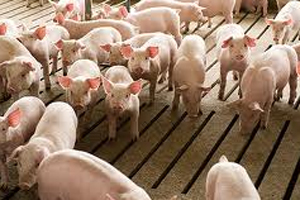PED virus in the US – where are we?

Since early May, the United States has been confronted with Porcine Epidemic Diarrhoea (PED) – so far unknown to the country. Ever since, researchers have been racing to understand more about how, where, what and why. Here is an update about progress so far.
The pathogen, a type of coronavirus called porcine epidemic diarrhoea virus (PEDV), was first identified in the United Kingdom in 1971, and it caused mass epidemics in Europe in the 1970s and 1980s. As pigs there developed immunity, the virus petered out and now causes only occasional, isolated outbreaks. It has since spread to Asia, where it has been considered endemic since 1982, causing substantial economic losses to pork producers. The virus can spread quickly by a faecal–oral route and infect entire herds. And although adult pigs typically recover, PEDV can kill 80–100% of the piglets it infects. The virus poses no health threat to humans.
The US billion dollar pork industry is however looking at losing millions of dollars in the event of a mass outbreak, scientists are working to track the virus and prevent its spread, even as they try to understand how it passed through biosecurity defences in the first place.
The virus has spread to 14 states already which is a sign that the outbreak is still expanding and could become a epidemic. The USDA have tried to keep PEDV and other diseases out of the country by restricting imports of pigs and pork products from certain nations, such as China. But on 10 May, the Veterinary Diagnostic Laboratory at Iowa State University in Ames confirmed that PEDV had infected pigs in Iowa, the leading producer of US pork.
The USDA’s National Veterinary Services Laboratories in Ames is one of just a few US facilities to have grown the virus successfully. But it had a head start: the lab imported the virus around 15 years ago from Asia, after a lengthy security-clearance process, in preparation for just such an outbreak. Lab scientists have spent recent months tweaking cell-culture protocols, and plan to distribute the virus to researchers on request in the coming weeks.
In the meantime, other research groups have focused on detecting viral DNA in sick pigs and on sequencing viral genes. In August, a team led by Douglas Marthaler, a scientist at the University of Minnesota’s Veterinary Diagnostic Laboratory, will publish the sequence of a virus genome taken from a Colorado farm. They found it to be 99.4% identical to a Chinese strain of PEDV. On the basis of that sequence, many researchers suspect that the virus originated in China, but Marthaler says that he is surprised by the level of similarity, because he would have expected the US virus to have evolved more in the time since it arrived.
In any case, he says, the potential origin of the virus does not say anything about the route that it took to reach the United States. Canada, the main source of pigs entering the United States, does not import pigs from China either. And although researchers know that the virus can be transported in faeces, they do not know how long it can survive outside pigs’ intestines, so it is unclear if a dirty boot, a contaminated package or an illegal import carried PEDV into the country.
Vets say that pig farmers are now restricting access to farms, and are cleaning pig manure more carefully off their clothes and trucks as they move between barns. And researchers still hope that they can elucidate the virus’s international and domestic path by looking for subtle evolutionary changes in viral genome sequences of samples from Asia and different US states.







